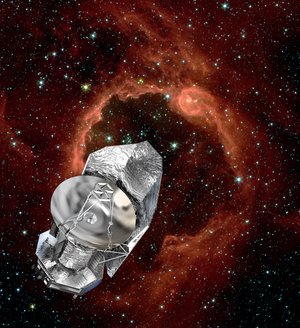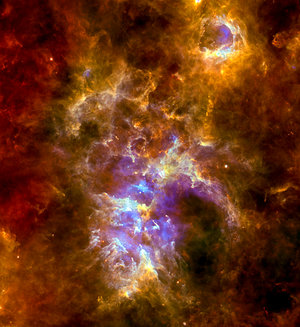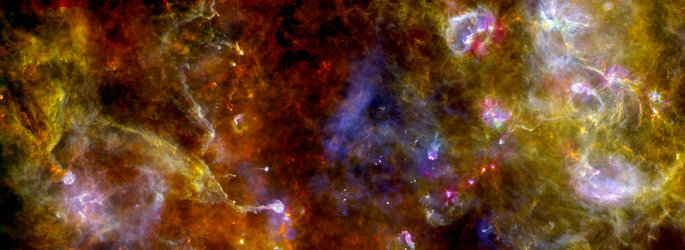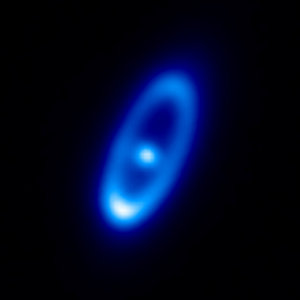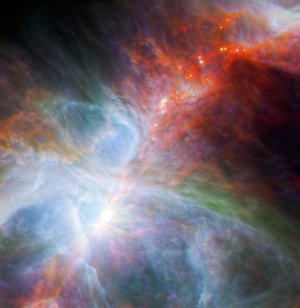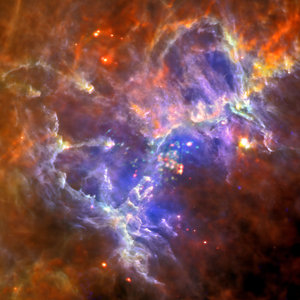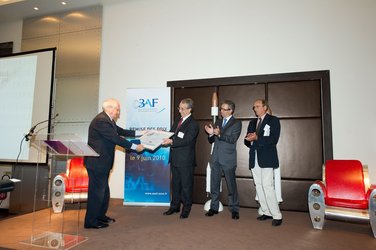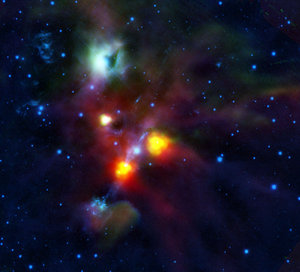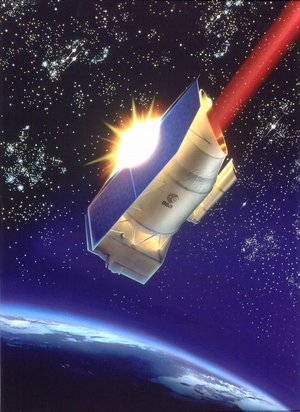Flying along the Vela ridge
A beautiful blue butterfly flutters towards a nest of warm dust and gas, above an intricate network of cool filaments in this image of the Vela C region by ESA’s Herschel space observatory.
Vela C is the most massive of the four parts of the Vela complex, a massive star nursery just 2300 light-years from the Sun. It is an ideal natural laboratory for us to study the birth of stars.
Herschel’s far-infrared detectors can spot regions where young high- and low-mass stars have heated dense clumps of gas and dust, where new generations of stars may be born.
The eye is immediately drawn to two prominent features in this image: a delicate blue and yellow butterfly shape just right of centre that appears to be flying towards a nest of coiled blue material in the lower right.
These regions stand out from their surroundings because their dust has been heated by young hot stars. A cluster of very hot, massive stars are strung out along the butterfly’s ‘body’, their radiation heating up the surrounding dust seen as yellow in this scene.
These heavy stars will follow ‘live fast, die young’, burning brightly for only a short time in cosmic terms. Those with more than eight times the mass of our own Sun will explode as cataclysmic supernovas within 10 million years of forming.
A particularly dense trunk of cool gas and dust weaves its way through the centre of the image, surrounded by a complex network of wispy red filaments.
Deeply embedded inside the filaments are numerous point-like sources, particularly evident towards the left of the scene: these are protostars, the seeds of new stars that will soon also light up the Vela region of the sky.





